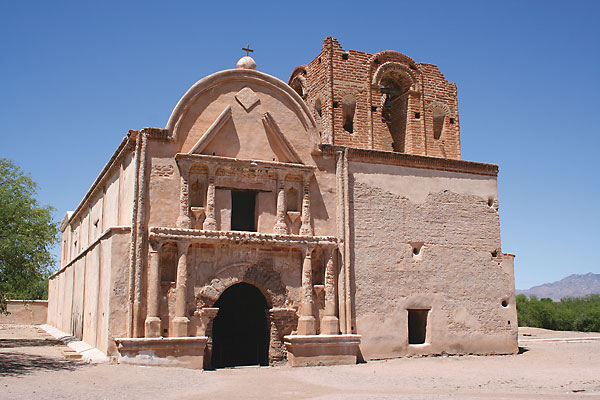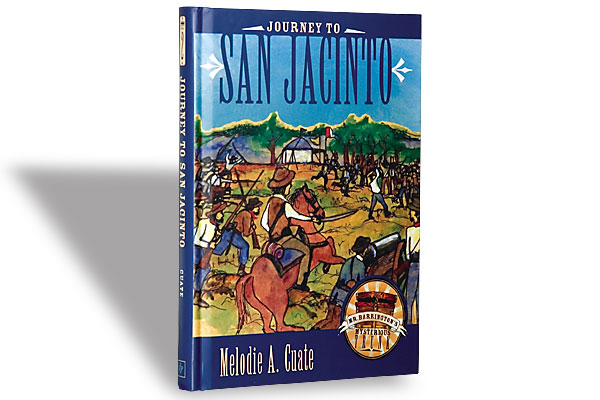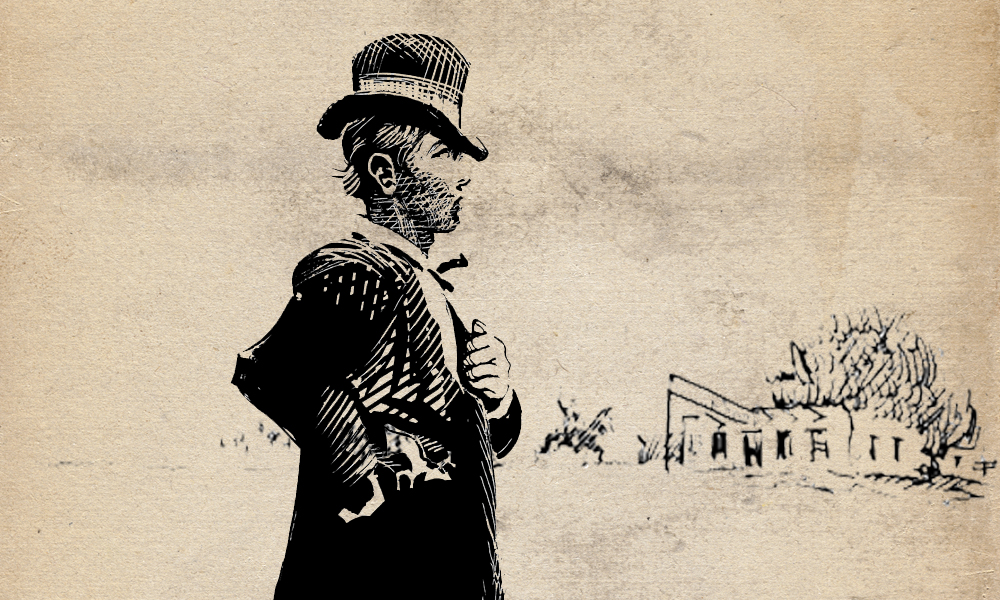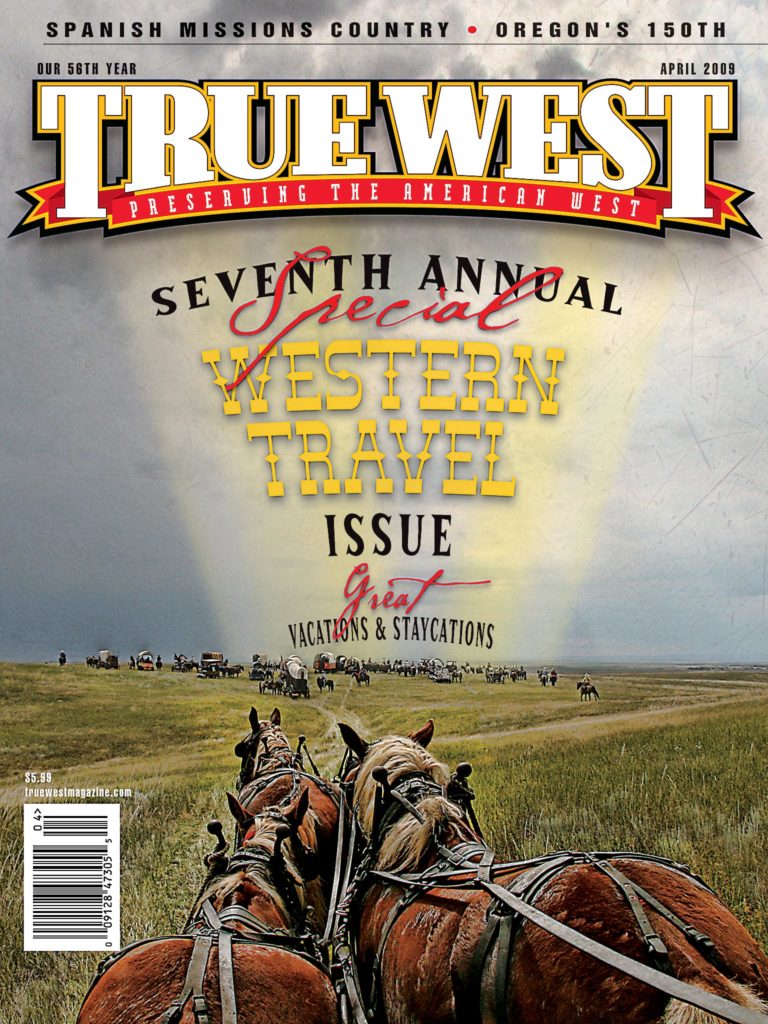
Tourists—tons of them—walk inside these walls with a quiet reverence.
It’s not because the Daughters of the Republic of Texas (DRT) remind them of nuns at their Catholic high schools, ready to slap their knuckles with rulers if they get out of line. It’s because this place deserves respectful silence.
I’m at Mission San Antonio de Valero, but nobody calls it that anymore. You know it better as the Alamo, where the walls went up on this present site—now surrounded by skyscrapers and less reverent attractions such as the Tomb Rider 3D Adventure Ride and Arcade— in 1724. It’s known across the world for the events of 1836 when Gen. Antonio López de Santa Anna turned William Travis, Jim Bowie, Davy Crockett and the other 180-plus defenders into martyrs and the Alamo into hallowed ground and a symbol of the fight for liberty.
The original mission was founded in 1718 near the San Pedro Creek headquarters, then moved the following year only to be destroyed by a storm in 1724. The third time proved a charm. The construction of the church began in 1744, but it had a tough go of things too. By 1836, the church was mostly ruins; it didn’t even have a completed roof until the Army began repairs in 1850. The DRT has run the Alamo since 1905 (the state had acquired it in 1883).
Holy San Antone
The Alamo is probably the most recognized Spanish mission in the West— perhaps the world—but it’s certainly not the only one. Dominicans, Jesuits and Franciscans came to New Spain to spread Christianity and build up Spanish citizenship. After all, only Catholics could become Spanish citizens.
The best starting point for learning about the role of the missions is Mission City itself, San Antonio. In 1720, Fray Antonio Margil de Jesús established Mission San José on the San Antonio River. By 1731, the East Texas missions of Concepción, San Juan and Espada were relocated to present-day San Antonio. While the DRT runs the Alamo, San Antonio’s four other missions fall within the jurisdiction of the National Park Service. A good first stop is the visitor center at Mission San José, which houses a museum, bookstore and theater where the film Gente de Razón reveals the role of the missions and their effect on the native populations.
Remember Goliad
Another mission closely associated with Texas Independence is about 90 miles south of San Antonio. Presidio Nuestra Señora De Loreto de la Bahia is linked forever to the Palm Sunday slaughter on March 27, 1836, when Col. James Fannin and his men, who had surrendered as prisoners of war, were executed in what became known as the Goliad Massacre.
The presidio was established in 1749 to protect Mission Espíritu Santo, which was originally built of wood and caliche before the Franciscans had it rebuilt of stone and mortar by 1758. Many historians credit Espíritu Santo as Texas’s first cattle-ranching empire, with an estimated 40,000 horses and cattle owned by the mission and settlers in the late 1770s. Both mission and presidio remain mighty impressive.
Historic El Paso
Another mission destination in Texas is El Paso, where the city’s mission trail takes visitors to landmarks such as Ysleta, Socorro and San Elizario. Ysleta, founded as a refugee camp during the Pueblo Revolt in the late 1600s, is the oldest, continuously-used Roman Catholic church in the nation. La Misión de Corpus Christi de San Antonio de la Ysleta del Sur was made of adobe with a tin-roofed bell tower in 1682, but floods and fires over time led to several updates, with the last major reconstruction taking place in 1908.
Restored in 2005, Mission Socorro—Nuestra Señora de Limpia Concepción de los Piros de Socorro del Sur (Our Lady of the Immaculate Conception of the Piros of Socorro of the South)—was also born after the 1680 revolt when Piro Indian and Spanish families were forced to find a new home and place of worship.
Also on El Paso’s Mission Trail is the 1882 chapel at San Elizario, probably the fourth church to serve the presidio. Capilla de San Elcear and the presidio were originally built in 1789. Today, the village of San Elizario also offers a great self-guided walking tour through the historic district. Billy the Kid buffs know that the Kid is said to have broken his pal, Melquiades Segura, out of Stop No. 6, the Old County Jail. If a chapel parishioner tells me it happened, I’m not going to say otherwise.
New Mexico In Ruins
From El Paso, it’s off to check out the missions, and ruins of missions, scattered across New Mexico. Socorro became a stop on El Camino Real in 1598, and construction on Nuestra Señora de Perpetuo Socorro, the first Catholic mission in the area, began in 1615. The mission was probably completed in 1626, although another wing was added to what’s now known as Old San Miguel Mission in 1853.
Spanish Franciscans built other missions for the Piro Pueblos during this time, and those ruins can be found at the Quarai, Abó and Gran Quivira sites of Salinas Pueblo Missions National Monument near Mountainair. By the 1670s, however, drought had forced the abandonment of the pueblos and the missions. Mass and fiestas are occasionally held at the sites, and visitors during Heritage Preservation Week each May can get down and dirty, and learn what really goes into stabilizing ruins.
More impressive might be the ruins at Pecos National Historic Park, where a 1.25-mile, self-guided trail from the visitors center leads to the ruins of Pecos Pueblo and Mission Nuestra Señora de los Ángeles de Porciúncula de los Pecos, built in the early 1600s. The mission was destroyed during the Pueblo Revolt of 1680 but rebuilt after the Spanish returned in the 1690s. In 1838, the last holdouts of Pecos Pueblo, numbering only 17, abandoned their home and moved to Jemez Pueblo.
Which brings us to Jemez State Monument, where the ruins of the circa-1610 San José de los Jemez church stand alongside the ruins of a 500-year-old Indian village in the inspiring San Diego Cañon. In August, nearby Jemez Pueblo commemorates the 1680 revolt, where the emphasis is on blessings and “mutual understanding.”
An American Revolution
Mission country wasn’t all God and glory. Life was brutally hard for the Indians—3,000 died of smallpox in 1640—who were forced to work for the Spaniards, who couldn’t protect the natives from Apache and Navajo raiders. Drought didn’t help matters, and the church attacked Pueblo religion. In 1675, 47 Pueblo “medicine men” were captured and taken to Santa Fe; three were hanged while the others were whipped and jailed. When the prisoners were released, one of them, a San Juan Indian named Popé, had had enough. He went to Taos and began planning war.
Taos, Picuris and Tewa Indians led the revolution against Spanish authorities, leaving 21 Franciscans and close to 400 Spanish settlers dead. Settlers escaped to Santa Fe and the non-revolting Isleta Pueblo. Soon, the Spaniards abandoned New Mexico, but Indian victory did not last long. In August 1692, after several failed attempts at Spanish conquest, Don Diego de Vargas began a more peaceful return of Spanish authority. The friars absolved the Indians of their “sins.”
One of the best views to be found is at Acoma Pueblo, where the San Esteban del Rey Mission sits on a sandstone mesa that rises to the heavens 367 feet from the valley floor. The mission was completed in 1640 under the direction of Friar Juan Ramirez. Legend has it that Ramirez was accepted by the Acoma inhabitants when he saved an infant from falling off the edge of the mesa.
Peaceful Arizona
From New Mexico, I’m off to southern Arizona to visit the “White Dove of the Desert,” Jesuit Father Eusebio Francisco Kino’s San Xavier del Bac mission south of Tucson. Kino founded the first mission in 1700, but the current church came later, 1783-1797, under the direction of Franciscans Juan Bautista Velderrain and Juan Bautista Llorenz. One tower was never completed, and no one knows for sure why.
South on I-17, Tumacácori National Historical Park protects the ruins of Missions San José de Tumacácori and Los Santos Ángeles de Guevavi, established by Father Kino in 1691, and San Cayetano de Calabazas, founded by Jesuit Father Francisco Pauer in 1756. Tumacácori is open year-round, but the other two missions are open only during the fall and summer on a guided ranger tour.
The California Trail
In California, San Diego is home to Mission Basilica San Diego de Alcala, which Father Junipero Serra, Superior of the Franciscans, founded in 1769 but moved it to its current location in 1774. That one did not last long, neither. Indians rioted on November 4, 1775, and burned it to the ground. The mission went through other ups and downs, and it was finally rebuilt in 1931 to mirror the 1813 version of the church.
Up the road in Oceanside, you’ll find the “King of the Missions,” the circa-1798 Mission San Luis Rey de Francia, founded by Father Fermin Francisco de Lasuen. After the mission fell into disrepair, Franciscans restored it in 1892. Mission San Luis earned its “king” moniker because its farm and pastures extended over a 15-mile radius.
Not Just For the Birds
California became home to 21 missions, but I’ll end this trip with the swallows at the “Jewel”—Mission San Juan Capistrano, founded in 1776 by Father Junipero Serra. It’s home to the Criolla (“Mission grape”), Father Serra’s Chapel and the Great Stone Church ruins. D.W. Griffith filmed a Western movie, The Two Brothers, here in 1910.
This mission is best known for cliff swallows. Around St. Joseph’s Day, on March 19, the little birds return to rebuild mud nests at their summer home in the ruins of the Great Stone Church. They’ll stay there until the Day of the San Juan, October 23, when they take flight for their winter grounds 7,500 miles south in Argentina.
If that doesn’t have you believing in God and miracles, I don’t know what will.






